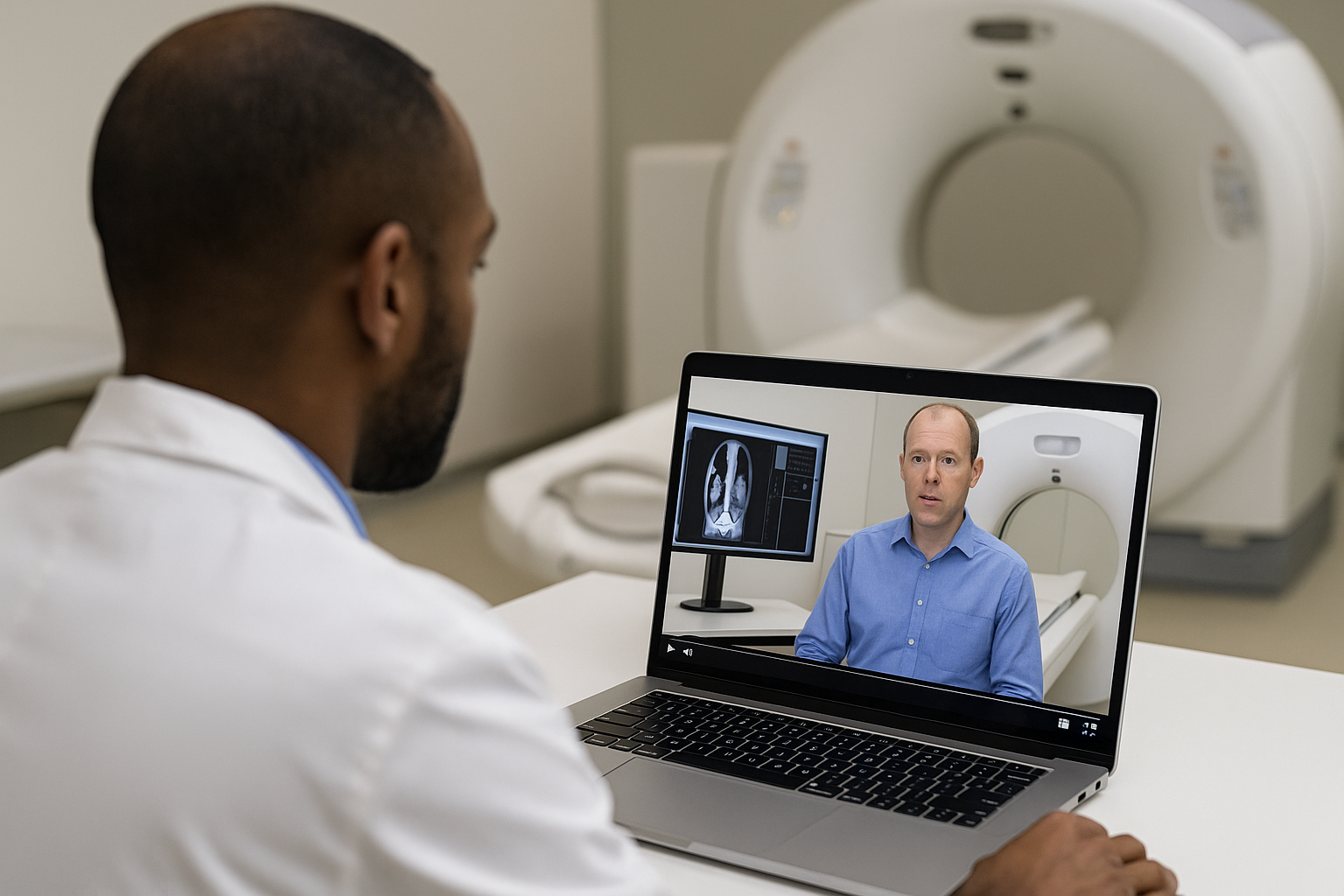IAEA Rolls Out Global Video Training Series to Optimize CT Imaging and Patient Safety
Yet despite its clinical utility, CT scanning involves ionizing radiation, which, if not optimized, may pose long-term health risks, particularly for children and frequent scan recipients.

In a landmark effort to improve diagnostic imaging safety and effectiveness across healthcare systems worldwide, the International Atomic Energy Agency (IAEA) has launched a comprehensive series of video tutorials focused on the quality assurance and dosimetry aspects of computed tomography (CT). The initiative aims to empower medical physicists — critical professionals in radiology departments — with advanced knowledge to enhance imaging quality while minimizing radiation exposure to patients.
The tutorial series, available free of charge on the IAEA’s Human Health Campus, is expected to elevate clinical practices in diagnosing and monitoring cancer, cardiovascular diseases, neurological disorders, and other major health conditions by improving how CT scans are performed and managed.
CT: A Powerful Diagnostic Tool with Risks to Manage
Computed tomography (CT) is among the most powerful diagnostic imaging technologies in modern medicine. By combining X-rays and advanced computer processing, CT scanners produce detailed cross-sectional and 3D images of internal body structures — enabling physicians to:
-
Detect tumors and cancers early
-
Diagnose trauma and internal bleeding
-
Map blood vessels and cardiovascular structures
-
Guide surgical and interventional procedures
-
Monitor disease progression and treatment outcomes
Yet despite its clinical utility, CT scanning involves ionizing radiation, which, if not optimized, may pose long-term health risks, particularly for children and frequent scan recipients. Hence, ensuring radiation dose optimization and image quality assurance is essential to balancing the benefits and risks of CT.
Medical Physicists: The Unsung Heroes of Imaging Optimization
The primary audience for the IAEA’s new training material is clinically qualified medical physicists. These professionals serve a vital role in hospital radiology departments, ensuring that imaging technologies operate safely, effectively, and within international safety guidelines. Their responsibilities include:
-
Managing radiation dosimetry to ensure patient safety
-
Developing and reviewing scanning protocols to suit clinical needs
-
Monitoring image quality metrics to detect deviations
-
Advising radiologists and technologists on best practices
-
Training other clinical staff in radiation protection
According to David Platten, a clinical scientist at United Lincolnshire Hospitals NHS Trust in the UK and a key contributor to the series:
“The videos have been designed to help medical physicists get started with optimization of clinical imaging protocols. They emphasize collaboration with clinical colleagues and offer actionable guidance on critical topics like CT automatic exposure control, protocol management, and image analysis.”
Inside the Six-Part CT Optimization Video Series
The new IAEA video tutorials are structured to cover the entire cycle of CT protocol optimization. Medical physicists and other radiology professionals can learn at their own pace, revisiting specific segments as needed. The six modules include:
-
Overview of Elements for a Successful Optimization Strategy
-
Introduction to the basic framework for CT quality and safety optimization
-
Emphasizes multidisciplinary collaboration
-
-
Using CT Automatic Exposure Control (AEC)
-
How to adapt radiation dose based on patient size, anatomy, and clinical need
-
Covers AEC principles and customization techniques
-
-
Performance Assessment and Monitoring of AEC Systems
-
Practical guidance on how to evaluate and maintain AEC performance
-
Ensures consistent image quality and dose control over time
-
-
Adjusting Scanner Parameters and Image Reconstruction
-
Optimizing raw data acquisition settings
-
Selecting appropriate filters and algorithms for diagnostic clarity
-
-
Image Quality Assessment Using Open-Source Tools
-
Demonstrates how to use freely available software for measuring contrast, noise, and resolution
-
Equips physicists with affordable tools for quality control
-
-
Applying Knowledge to Real-World Clinical Scenarios
-
Case-based learning modules to apply theory into practice
-
Encourages critical thinking in balancing dose and diagnostic efficacy
-
Each video is enriched with real-life case examples, demonstrations, and expert commentary to make the content highly relevant to practitioners in diverse clinical settings.
Strengthening Global Capacity in Medical Physics
This e-learning initiative is part of the IAEA’s broader mission to enhance global health through nuclear science and technology. The videos complement ongoing IAEA programs aimed at:
-
Building national and regional medical physics capacity
-
Supporting regulatory compliance and safety standards
-
Expanding access to cancer diagnostics and treatment in developing countries
-
Providing field-ready tools and online learning materials for professional development
“This resource is a practical tool to strengthen the role of medical physicists in ensuring patient safety and image quality in CT examinations,” said Graciela Velez, Medical Physics Training Officer at the IAEA Division of Human Health. “It complements the IAEA’s continued commitment to building clinical competencies in medical radiation physics worldwide.”
A Global Resource, Freely Available to All
One of the most significant aspects of the video series is its open access. Anyone with internet access — from urban hospitals in Europe to rural clinics in Africa and Asia — can benefit from these resources. The IAEA Human Health Campus, the agency’s flagship platform for nuclear medicine and medical physics education, houses the full series alongside other valuable materials on dosimetry, imaging technologies, and radiation safety.
By removing cost and accessibility barriers, the IAEA ensures that even resource-constrained healthcare systems can benefit from the latest advances in CT optimization — potentially saving lives through improved diagnostics and reduced radiation harm.
Safer Scans, Better Outcomes, Stronger Health Systems
As CT technology continues to advance, ensuring its safe and effective use becomes paramount. The IAEA’s new video tutorial series represents a practical and inclusive approach to global capacity building. By equipping medical physicists with the tools and training they need, the initiative strengthens the foundations of patient safety, imaging excellence, and international health equity.









